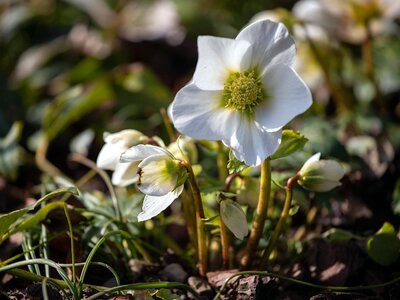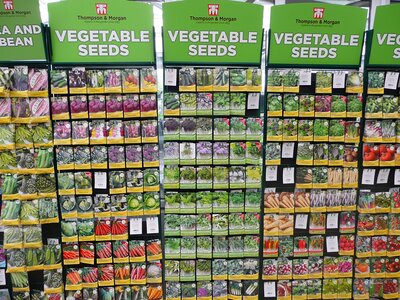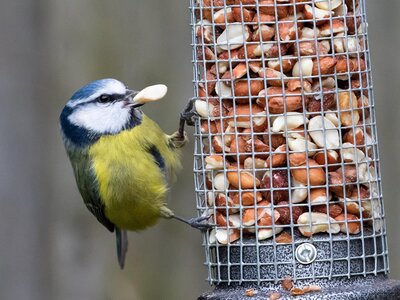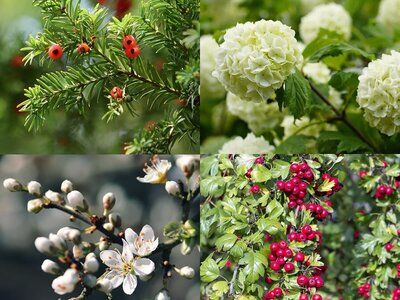The Tiny Garden Heroes You’ve Probably Never Heard Of
When it comes to keeping pests under control in the garden, most of us want something that works, doesn’t harm the environment, and is safe for pets, kids, and wildlife. That’s where nematodes come in – nature’s very own pest patrol!
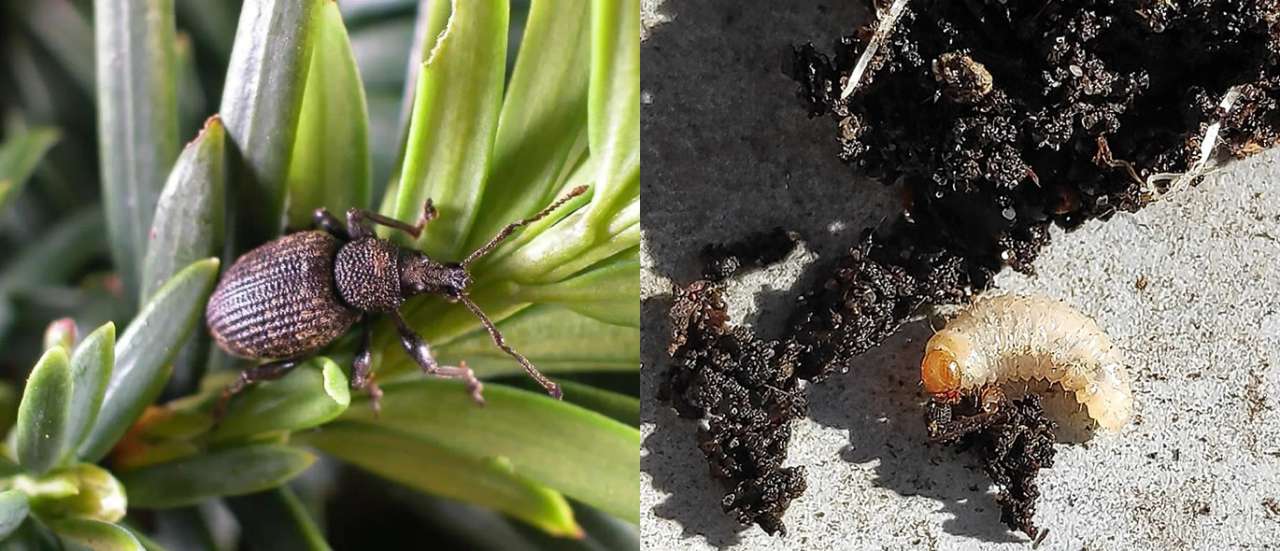 Vine weevil (left) and its larvae (right) - Public Domain Image & Photo by Photo by Marek Ślusarczyk (CC BY-SA 3.0) respectively.
Vine weevil (left) and its larvae (right) - Public Domain Image & Photo by Photo by Marek Ślusarczyk (CC BY-SA 3.0) respectively.
So, what exactly are nematodes?
Nematodes are microscopic worms that live in the soil. Now before you say “no thanks!” – hear us out. Not all nematodes are bad. In fact, some are incredibly useful for gardeners.
The types we use in gardens are beneficial nematodes, which hunt down and kill common garden pests, but they leave your plants, pets, and pollinators completely alone. They’re a natural, chemical-free way to protect your garden.
What pests do they control?
There are different types of nematodes, and each one targets specific pests. Here are the most popular types used in Irish gardens:
- Steinernema feltiae – great for tackling fungus gnat larvae and vine weevils, particularly in pots and containers, this nematode is available as 'Entonem' by Koppert.
- Steinernema carpocapsae – used against caterpillars, cutworms, and leatherjackets (the larvae of crane flies) this is the nematode available as 'Capsenum' by Koppert.
- Heterorhabditis bacteriophora – very effective against chafer grubs and vine weevil larvae in lawns and beds.
All these beneficial nematodes work by entering their pest host and releasing a bacteria that quickly kills the insect. It sounds intense, but it’s all going on out of sight, in the soil – no mess, no fuss! Not only that but the pests the nematodes kill are then left to break down in the soil making it even more nutritious - well, for your plants anyway.
Symptoms of Vine Weevil and Leatherjackets in the Garden
Vine Weevils - The larvae of vine weevil feed on the roots of plants causing significant damage, often leading to plant death, symptoms include the plants looking like they need watering/wilting. The larvae are found in and around the roots of plants so if your plants are looking unhealthy and you've seen these bugs around the garden, it is worth checking the roots to see if there are larvae there causing damage.
Adult weevils feed on leaves with damage showing as notches or half-moon shaped cuts on the edges of leaves. All adult Vine Weevils are female and can lay a high number of eggs, which develop into plant damaging larvae. You can kill off vine weevil larvae with Entonem.
Leatherjackets - If you have bare spots and brown spots in your grass, check to see if you have brown, tube-shaped larvae without legs under the sod. If so, then you have a leatherjacket problem. Leatherjackets are the larvae of crane flies. They feed on grass roots and can also affect crops such as lettuce and some brassicas. They bite onto the base of grass shoots and pull them underground, causing the bald spots that you see. When it's damp, they come up towards the surface, especially in the evening. You can fight leatherjackets with Capsanem.
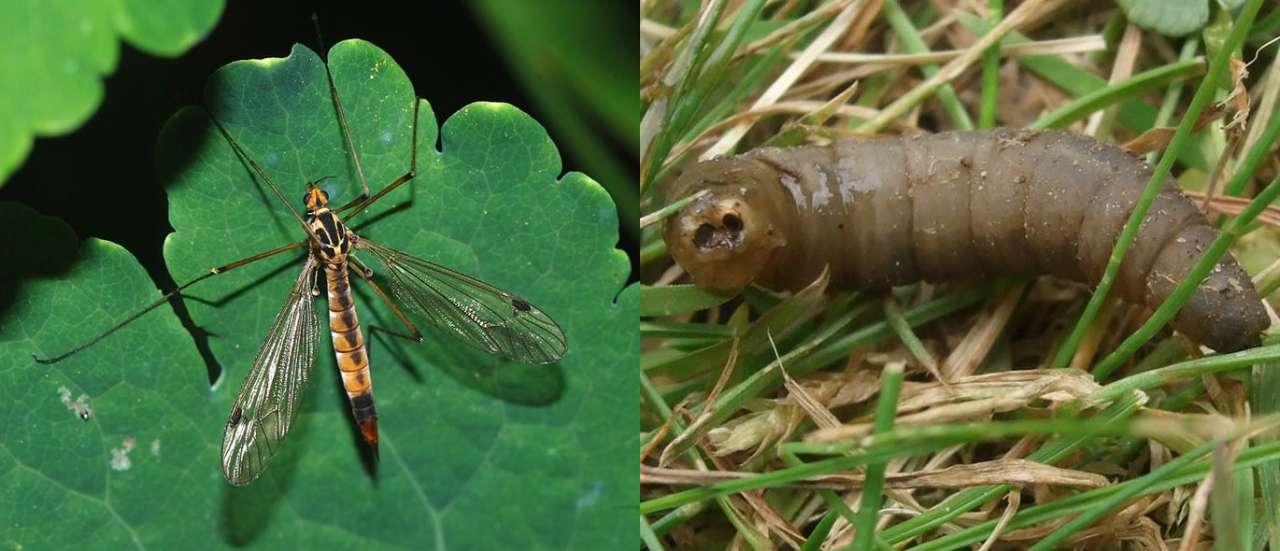 Crane fly (left) and its larvae - leatherjackets (right) Images by Alvesgaspar (CC BY-SA 3.0) & SimonLH64 (CC BY-SA 2.0) respectively.
Crane fly (left) and its larvae - leatherjackets (right) Images by Alvesgaspar (CC BY-SA 3.0) & SimonLH64 (CC BY-SA 2.0) respectively.
Why use nematodes?
- Eco-friendly – no chemicals, no residue, and no harm to non-target species.
- Safe for everyone – including pets, bees, birds, and kids.
- Effective – if applied correctly and at the right time, they’re a powerful way to reduce pest problems naturally.
- Approved for organic gardening.
When should you apply them?
Timing is key. Nematodes are living organisms, and they need certain soil conditions to thrive:
- Soil temperature should be above 10°C – usually from spring through to early autumn but do check the details of the specific brand when purchasing.
- Apply when pests are active – for example, target vine weevils in spring and again in late summer, and chafer grubs in late summer to early autumn.
- Always follow the instructions on the pack – different nematodes have different lifecycles and targets.
How do you use them?
It’s simple, really:
- Mix with water – Nematodes come as a powder or gel that you mix into a watering can or hose-end sprayer.
- Water onto moist soil – Make sure the soil is already damp before applying. Water the area again afterward to help the nematodes move through the soil.
- Keep soil moist for at least a week afterward – this helps them stay active and find their prey.
They need to be used quickly after purchase (they’re alive, after all!), so store them in the fridge until you're ready.
Final thoughts
If you’re looking for a natural way to fight back against garden pests, give nematodes a go. They're a smart, sustainable solution that works with nature, not against it.
And if you’re not sure which type you need or when to apply them, pop into one of our garden centres, email us or give us a ring – we’re happy to help you find the right little wriggler for the job!
You can also download one of our quick guide sheets below:

